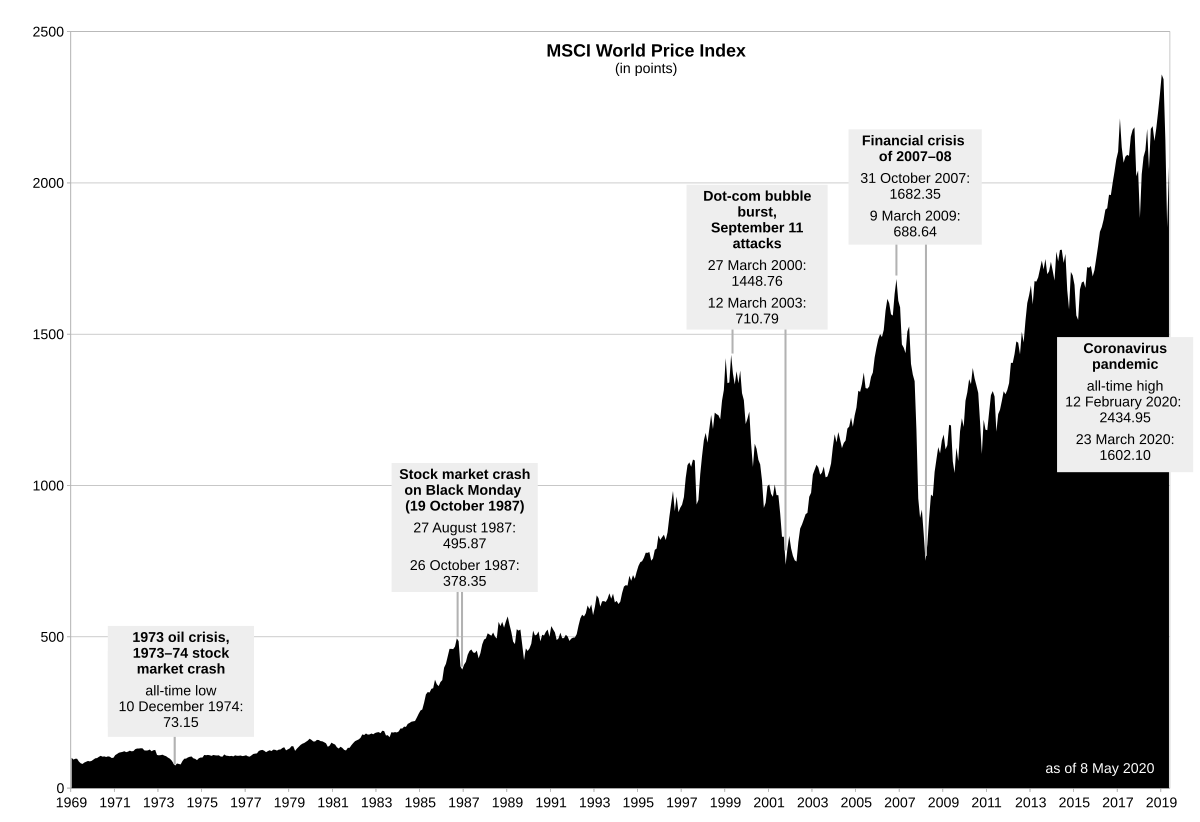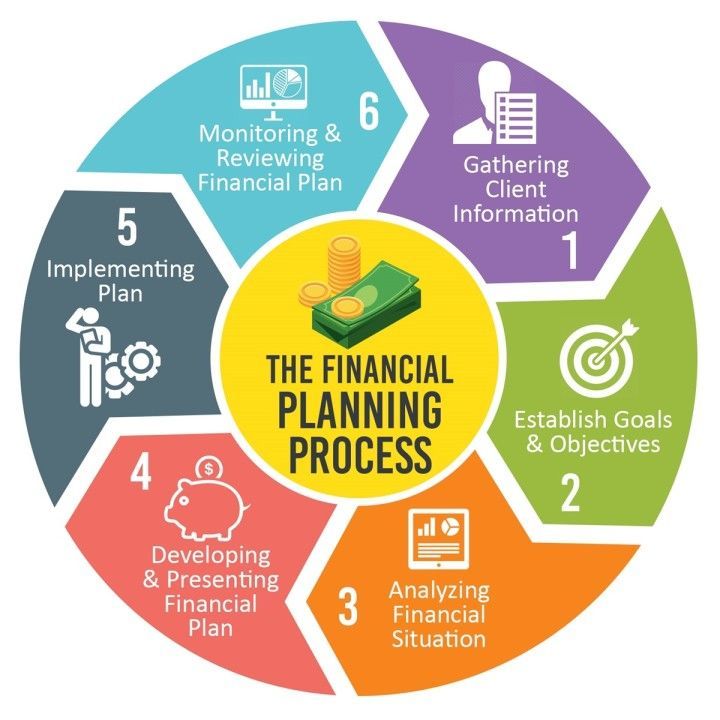By Mike Abbott
•
April 15, 2024
The investment world is full of clever sounding people full of even cleverer sounding ideas about what to buy and what to sell to get you ahead of the game. But we stay well away from the noise and instead go to the quieter halls of think tanks and universities to listen to what financial science and research finds. Our investment process at Silverhall Wealth is rigorously evidence based. It's that process that allows me to bring you an article from one of the most distinguished professors in the world of investment science, Dr Kenneth French. Ken French is the Roth Family Distinguished Professor of Finance at the Tuck School of Business at Dartmouth College and here he sets out five key principles for your lifetime investment journey. See the full original article here KEY TAKEAWAYS In this essay, Dartmouth finance professor Kenneth R. French explains five investment principles that he uses as the foundation for a holistic approach to portfolio design. The essay is directed at individual investors and financial advisors who work with them. French develops a flexible and comprehensive framework for portfolio design using the global average of all investors and the global portfolio of all stocks, bonds, and other financial assets as reference points. I have been passionate about investing since I started studying finance in 1977. The first investment class I took was dominated by the Capital Asset Pricing Model (CAPM) of Sharpe (1964) and Lintner (1965). The CAPM says every investor’s ideal portfolio is some combination of the risk-free asset and the value-weight (VW) market portfolio of all stocks, bonds, and other investible assets, and every portfolio’s expected return is a linear function of its beta, which is its sensitivity to the market return. The academic view of investing is far more complicated today. In this essay, I focus on five concepts that capture much of what I know about investing and that drive my approach to portfolio design. Risk is uncertainty about lifetime consumption. The average dollar invested holds the market. Chance dominates realised returns. Active investing is a negative sum game. Most investors should diversify their portfolios. This is a vibrant time for investment research. There is much that we don’t know and lots of controversy about what we do know. Although we may disagree on other issues, I think most researchers who study investing and portfolio design will agree that the five concepts in my list are true, so I will call them facts. I explore the implications of each fact for the investment strategies and portfolio designs of individuals. The essay does not explore the interesting challenges corporate managers face when trying to evaluate potential projects. It is also not directed at the investment problems of hedge fund managers, venture capitalists, or private equity activists, although I hope former students in these areas agree with what I say. The emphasis on individuals, and financial advisors who work with individuals, simplifies the discussion and keeps what is already a long essay from getting longer. 1. Risk is uncertainty about lifetime consumption Most investors are risk averse. Given the expected return, they prefer lower risk, and given the level of risk, they prefer higher expected return. Most investors understand that the expected return on an investment is essentially the best guess of what the return will be. There is a lot more confusion about risk. When I ask students, investors, and friends what risk means I get conflicting answers. Some say it is the potential for loss. Others suggest it’s the volatility of the return. And others say it’s beta, from the CAPM. Good portfolio design requires a clear understanding of risk. I define risk as uncertainty about lifetime consumption broadly defined . People invest because they want to use their wealth in the future. Some might plan to spend all the money on themselves for things like food, shelter, travel, recreation, and medical care. Others may plan to spend some of their wealth on political contributions, charitable donations, or gifts and bequests to their children. My definition of lifetime consumption includes all these and any other anticipated uses of wealth. Investors like a high expected return because it increases the expected wealth that will be available to spend or give away. And everything else the same, risk averse investors prefer less uncertainty about their future wealth. If people don’t like uncertainty about future wealth, shouldn’t we measure each investment’s risk by its potential for losses or the volatility of its returns? No. Those definitions miss important interactions within an investor’s portfolio and, even more important, between the portfolio return and the investor’s other sources or uses of future wealth. My goal is a portfolio I can justify to myself today, based on the information available now. Because unexpected returns will dominate the outcome, I won’t judge my choice on what the portfolio delivers tomorrow. Think about homeowner’s insurance. If we consider only the policy, this investment is as bad as a lottery ticket. First, there’s lots of uncertainty about the outcome. Typically, the policyholder pays the premium and gets nothing back, but there is always the chance of a big payoff. Second, if the insurance company rationally expects to make money on the contract, a rational policyholder’s expected return must be negative. Why would a risk averse homeowner choose a volatile investment with a negative expected return? Because insurance reduces the uncertainty of his or her lifetime consumption. The probability that a disaster will destroy any specific policyholder’s house is tiny, but if it does, the loss to that homeowner can be catastrophic. Most homeowners are happy to pay the annual insurance premium to eliminate this potential hit to wealth and lifetime consumption. In that same spirit, it is particularly risky to invest most of your savings in your employer’s stock. As the former employees of Enron might warn us, this can be a remarkably unfortunate way to put all your eggs in one basket. Enron was an energy and trading company based in Houston, Texas. After roughly a decade of phenomenal success, Enron filed for bankruptcy in 2001. Many employees had most if not all their 401(k) in Enron stock and lost their job and retirement savings at the same time. A better understanding of risk might have led them to a retirement portfolio that reduced their uncertainty about lifetime consumption. Liability driven investing is another way to manage the uncertainty about lifetime consumption. My friend Jeff Coyle is a financial advisor in Southern California who has spoken to most of the classes I have taught over the last 25 years. He describes a client who hired a shipyard in Italy to build a large yacht. The amount and timing of the payments were known, but the obligations were in euros. Jeff took this liability off the table by buying government bonds that delivered the euros needed when each payment was due. Those of us with more mundane obligations can use the same approach. If you are stretching to buy your first home, for example, you might move the savings you will need at closing into a safe money market account today. The general takeaway here is to think about risk holistically. How will a potential investment vary with your existing portfolio and with your other sources and uses of wealth? More succinctly, how will it affect the uncertainty about your lifetime consumption? 2. The average dollar invested holds the market I use a top-down approach when designing my investment portfolio. (My wife’s tastes and preferences also affect our portfolio. To respect her privacy, I leave her out of this discussion.) I start with the fact that all investors must collectively hold the global market portfolio of all stocks, bonds, and other financial assets. Simple arithmetic then says the average dollar invested holds the global market portfolio. And if we weight by investment wealth, so Bill Gates gets more weight than I do, the average investor also holds the global market. As a result, the average investor and the global market portfolio provide useful reference points for my portfolio. My pro rata slice of the global market portfolio would probably be a fine choice for my portfolio if my preferences and circumstances matched those of the global average investor. But they don’t. The differences help me think about how my portfolio should differ from the global market portfolio. I illustrate this framework with a few examples of how I differ and the implications of the differences for my portfolio. I live in the United States, almost everything I buy will be denominated in US dollars, and I may not be treated as well as local investors in foreign markets. All three facts lead me to overweight US investments. First, economists talk about something we call “keeping up with the Joneses” and younger readers know as FOMO, fear of missing out. If your neighbors overweight US investments, you can reduce your risk of suffering while they prosper by also overweighting US investments. Second, since the things I expect to consume are priced in dollars, investments denominated in other currencies have an extra risk; the dollar payoff from a foreign investment will be smaller if the foreign currency depreciates. Third, local investors have an advantage over foreigners in some markets. Foreigners sometimes pay higher effective tax rates than locals, and in some countries capital controls make it difficult for foreigners to repatriate their wealth. Argentina, for example, instituted restrictions on the flow of capital in 2019 that continue to challenge foreign investors. These and similar factors push me and other US investors to overweight US investments and underweight foreign investments. And this seems to be a universal result. As a group, locals overweight the investments in their home market. Let’s look at another factor. I am substantially older than the average investor, even after weighting people by their investment wealth. When I was young, most of my wealth was anticipated income, so the volatility of my investment returns contributed little to the uncertainty of my lifetime consumption. The return on my investment portfolio had almost no effect on my anticipated wealth or lifetime consumption. I also had a lifetime of real options ahead of me. If my investments did poorly after I had accumulated some retirement savings, I could adjust, perhaps by deferring the purchase of a vacation home or by moving to a higher paying but less attractive job. At my current age, the return on my investment portfolio pretty much determines the wealth I will have available to spend or give away. As a result, my age pushes toward less risk, with a bigger allocation to fixed income and a smaller allocation to equities than the global market portfolio. A third factor is my risk aversion. I think I’m less risk averse than the average investor. While my age pushes toward more fixed income, my low risk aversion pushes toward equity. Low risk aversion is winning for now, so I hold more equity and less fixed income than the global market portfolio. The top-down global-market approach draws attention to many of the issues that are important when designing an investment portfolio. In addition to domicile, age, and risk aversion, one should consider how personal financial circumstances, including anticipated and potential sources and uses of wealth, tend to vary with the components of the global market portfolio. Other issues, such as transaction costs, tax considerations (including unrealised capital gains and losses in one’s taxable portfolio), environmental, social, and governance concerns, and perceived informational advantages and disadvantages, may also be important. The top-down approach helps me think about the direction I should move away from the global VW market – should I overweight value stocks and underweight growth stocks or vice versa. It also gives me a general sense of how much each of my portfolio allocations should differ from the global market’s. The approach does not tell me, however, exactly how much to deviate unless I am trying to match a specific liability, such as locking in a big down payment. Someone clever may be able to determine my “ideal” portfolio, but I would not trust a precise analytical solution to a problem as complicated and poorly defined as this. 3. Chance dominates realised returns Perhaps because the evolutionary cost of false negatives – failing to see real patterns – was high relative to the cost of false positives, people seem hardwired to identify patterns, whether they are real or not (e.g., Shermer 2008). Who hasn’t seen a ship in the clouds or human figures in a dirty window? Those of us who grew up in New Hampshire in the 20th century have fond memories of the Old Man of the Mountain, a rock formation that looked like the silhouette of, well, an old man. We mourned when he fell from the mountain in 2003 and are proud to honour his memory on our road signs and license plates. Given the importance of financial markets and the human inclination to identify patterns, it is not surprising that researchers and investors have found patterns in asset prices and returns for centuries and continue to do so now. It is also not surprising that a nontrivial fraction of the patterns are false positives. We can split an asset’s return into its expected return, which is our best guess of what will happen based on all the information currently available, and its unexpected return, which is the surprise – the difference between what actually does happen and what was expected, R = E(R) + U. (1) The goal of most who study stock returns is to predict the future, not describe the past. In the context of equation (1), researchers are trying to identify persistent differences in expected return across assets or asset classes. Differences in the cross-section of expected returns, however, are usually small relative to the volatility of unexpected returns, so realised returns are mostly the result of chance. Over reasonable investment horizons – three, five, ten, even 20 years – realised returns are typically dominated by the unexpected component and inferences from realised returns are often false positives. The performance of FAANG stocks – Facebook, Amazon, Apple, Netflix, and Google – over the decade from 2012 to 2021 illustrates the importance of unexpected returns. (I know, some of the names have changed, but FAANG sounds better than MAANA.) The 2012-2021 average annual return on a VW portfolio of these five large stocks is 30.09% and the cumulative ten-year return is 1166%. (The FAANG portfolio and value-weight market returns here and below are computed using monthly data from Chicago Booth’s Center for Research in Security Prices, CRSP, and are denominated in US dollars.) Should we expect the portfolio to deliver 1166% over the next decade? No. Strong unexpected returns are a better explanation for the great return and, by definition, the expected value of future unexpected returns must be zero. "Those who use the recent returns on the FAANG portfolio to predict its future returns will probably be disappointed." The FAANG portfolio’s return in 2020 is a remarkable 61.47%, almost three times the solid 20.99% return on the CRSP VW market portfolio. The success of the five technology stocks in the first year of the pandemic makes sense. The companies were selling entertainment, social interaction, and home delivery to a world of people isolated in their houses. The huge increase in the demand for FAANG services could have been anticipated only by someone whose crystal ball forecast COVID-19 and its consequences. Those who use recent returns on the FAANG portfolio to predict its future returns will probably be disappointed. The incentives to identify new patterns in stock returns or to improve existing patterns are strong: degrees are awarded, papers are published, tenure is granted, and new investment products are sold. The set of potential patterns or improvements a researcher might test is huge. There are thousands of stocks, an almost unlimited list of attributes, and many ways to combine the candidates. With a good search algorithm and enough time, a clever empiricist should be able to find big patterns in any reasonable sample of realized returns. Ideally, the winning pattern describes expected returns, but evidence that it doesn’t is not likely to arrive before the successful researcher is rewarded. If we are not already, we may soon be facing an onslaught of unconstrained search, the cardinal sin of financial economists. How can an investor tell whether the winning pattern is gold or pyrite? Start by considering the model that justifies the pattern. If there is none, presume you are looking at the winner of a massive, uninformed search. A winning pattern is more likely to persist if the model that predicts it is compelling. For example, a model motivated by greed, fear, and transaction costs has potential. A model that works only if all returns are first converted to Turkish lira does not. Finally, the credibility of both the model and the pattern are enhanced a lot if the model obviously came first. Be suspicious about unusual procedures, a peculiar sample period, or strange variable definitions. Researchers constructing factors, for example, often follow the procedure in Fama and French (1993), not because (ahem) it is obviously the best, but because doing so eliminates potential users’ concerns about one type of overfitting. Everything else the same, almost all researchers want a long sample period. As a result, the start dates for most empirical research are driven by data availability. Three typical start dates in research on US stock returns align with key dates for the widely used monthly CRSP data, January 1926, July 1962, and January 1973. Other databases drive other start dates. Be suspicious when there is no obvious link between the start of the available data and the start of the sample. Similarly, expect the sample to end no more than four or five years before a paper is circulated. Finally, Novy-Marx (2014) emphasises that unusual variable definitions are ominous. Don’t be surprised if the patterns they produce do not persist out of sample, especially if standard definitions destroy it in sample. In short, when designing a portfolio, investors are typically interested in future differences in expected returns. Because expected and unexpected returns come in pairs, however, it is easy to misinterpret differences in unexpected returns as differences in expected returns. Many years ago, my colleague Gene Fama convinced me that the best way to manage this problem is to start with the null hypothesis that any pattern in realised returns happened by chance. When testing the chance hypothesis, look for (i) a compelling story that predicts the pattern in expected returns, (ii) strong in-sample evidence that the pattern is more than noise, and (iii) robust out-of-sample evidence that reinforces that conclusion. Be particularly wary of patterns identified by uninformed and unconstrained search. 4. Active investing is a negative sum game Dick Roll is a friend, finance professor, and pilot who flies his own plane. Many years ago, when we were colleagues at UCLA, I asked him whether his hobby was risky. He said the data imply it’s about as dangerous as driving a motorcycle. Dick is a smart and careful man, so I suggested the averages overstate the risk when he flies. His response changed the way I see the world: “Ken, every pilot thinks he’s better than average.” Bill Sharpe published a great paper in the Financial Analysts Journal in 1991 that implies Dick’s insight about overconfidence extends to active investors. Sharpe’s paper, “The arithmetic of active management,” makes a simple point. The average dollar invested actively loses to a passive investment in the value-weight market portfolio. Sharpe’s argument is straightforward. Suppose I hold a passive VW market portfolio, that is, I hold my pro rata slice of all stocks, bonds, and other financial assets in the aggregate market portfolio. Since I hold the VW market, my return is the return on the market minus the low costs of maintaining my buy-and-hold portfolio, RM – CL . And since I hold the market portfolio, the combination of all other investors – passive and active – must also hold the market, and their combined return is the return on the market minus their higher costs, RM – CH . Why are their costs higher? Because the active investors in the group pay extra management fees, transaction costs, and the other expenses of investing actively. My costs CL are lower than the VW average costs of all other investors CH , so over every period – every year, day, minute, and even every instant – my return RM – CL is higher than the VW average return of all other investors RM – CH . "When choosing my own investments, I remind myself that most overconfident investors don’t realise they are, and that client fees pay for most investment managers’ yachts."





